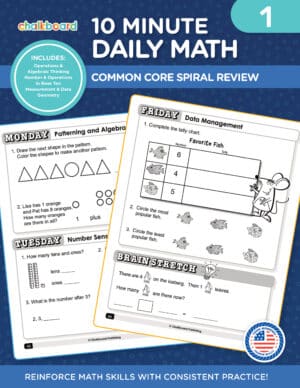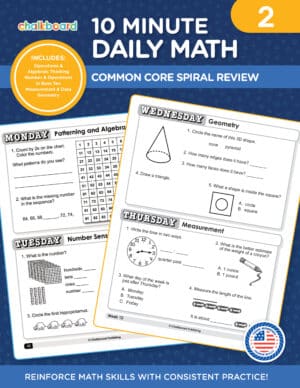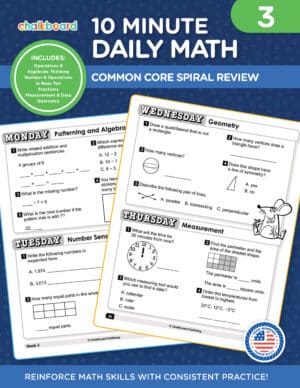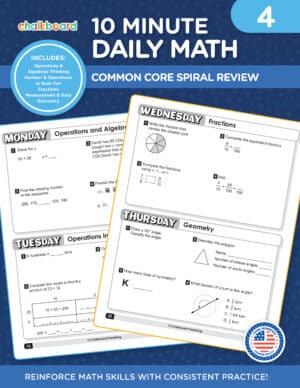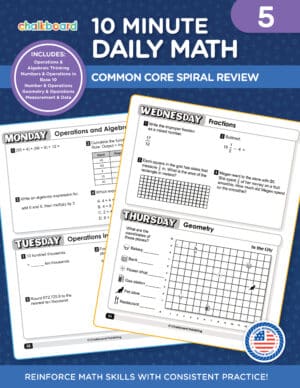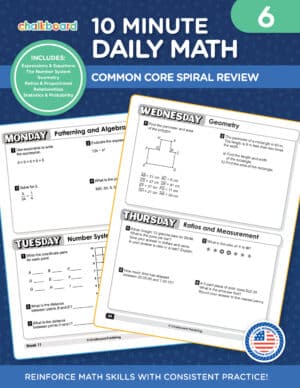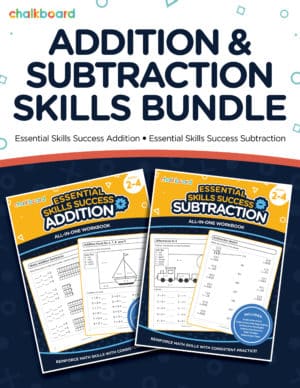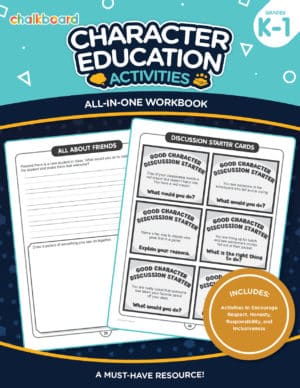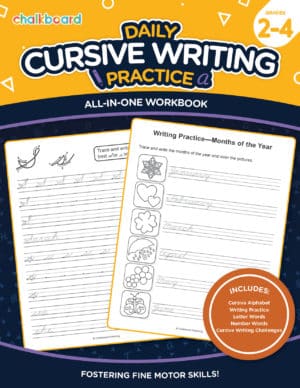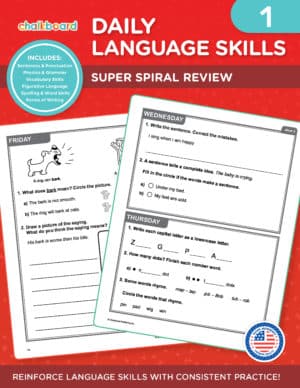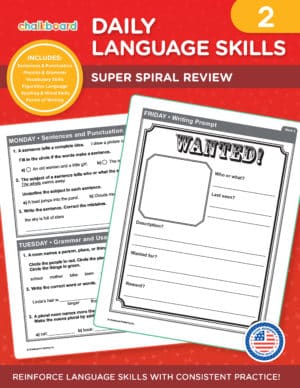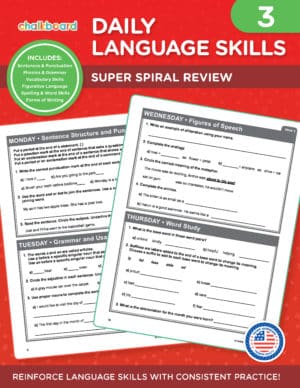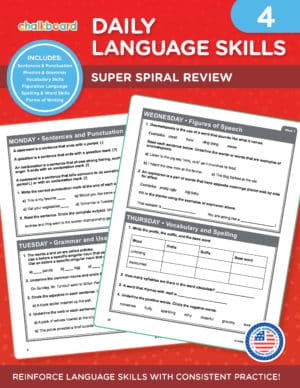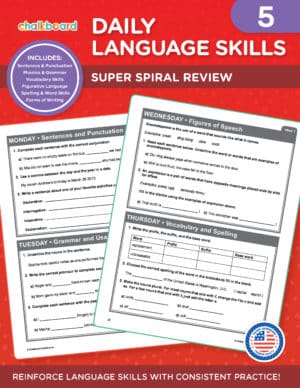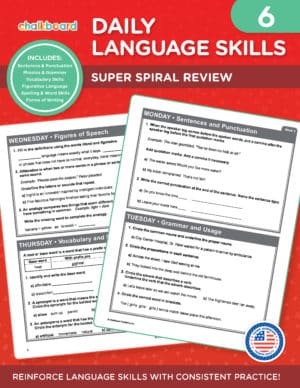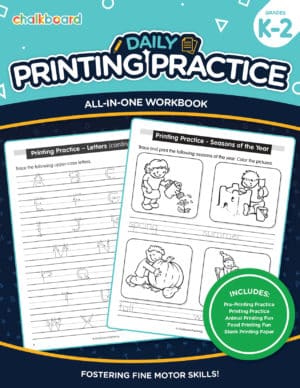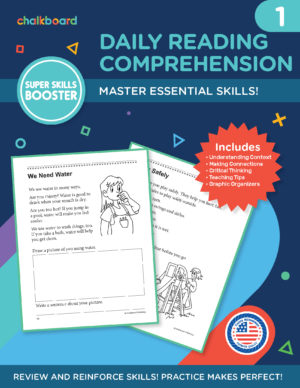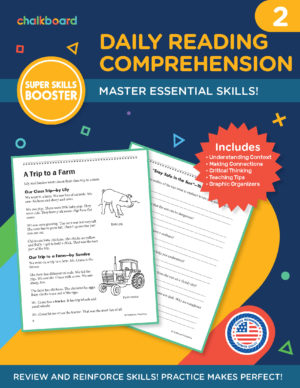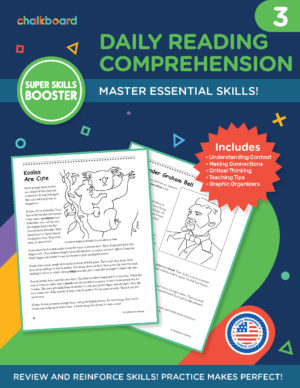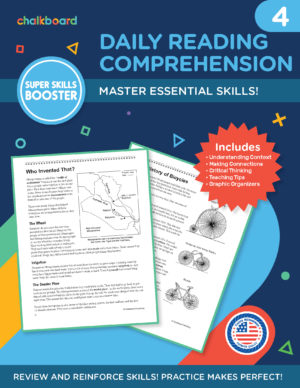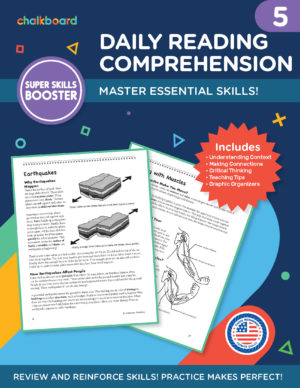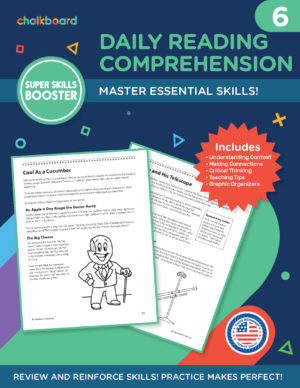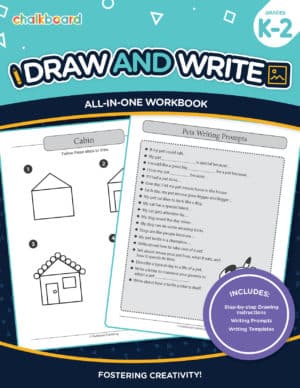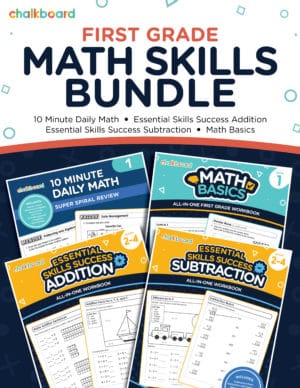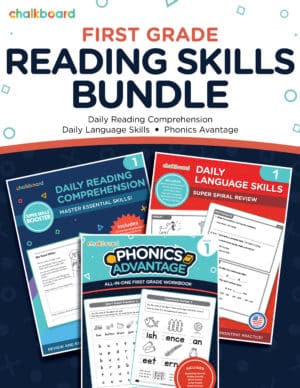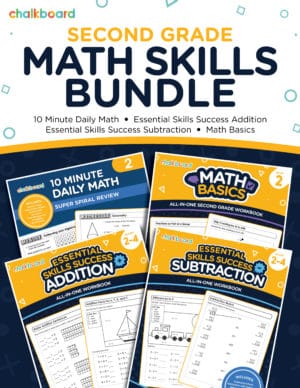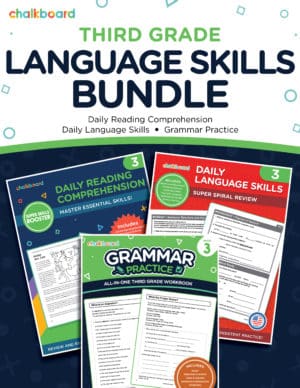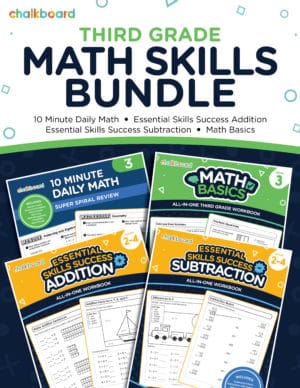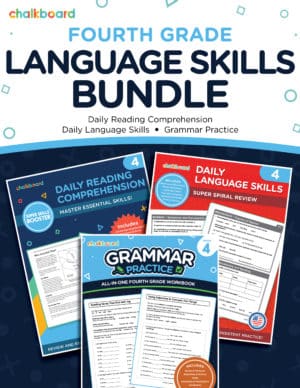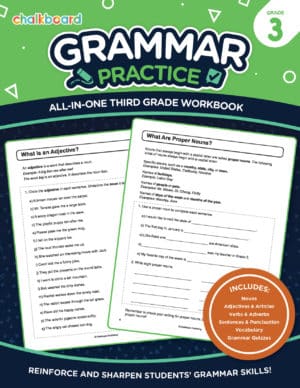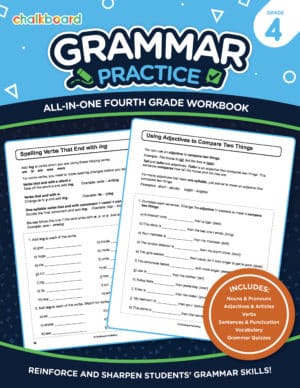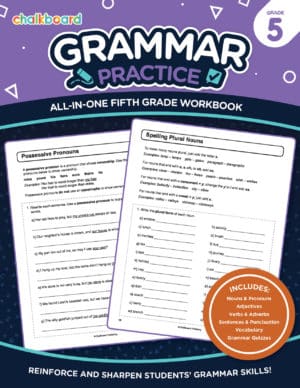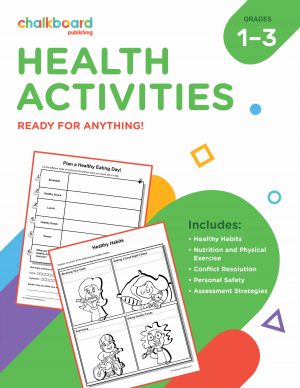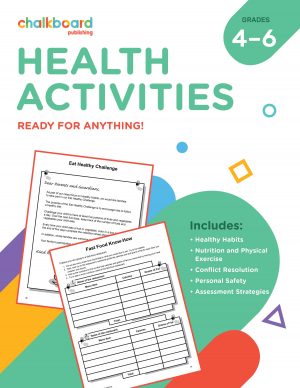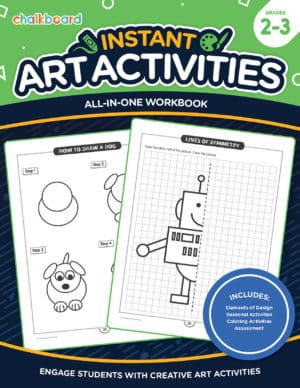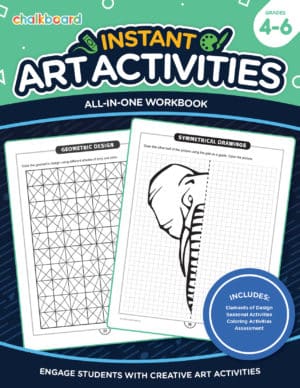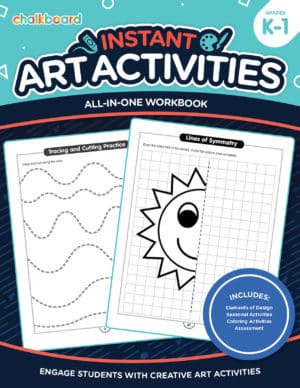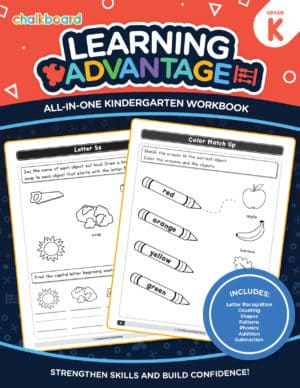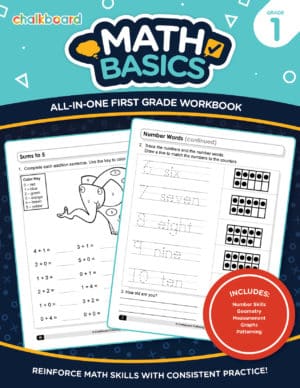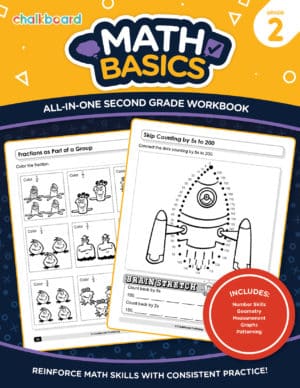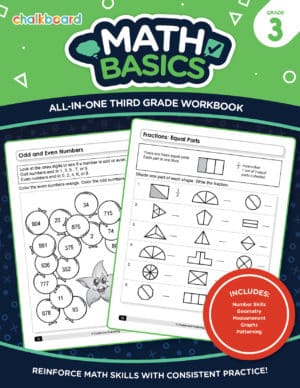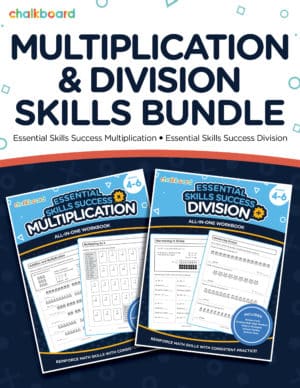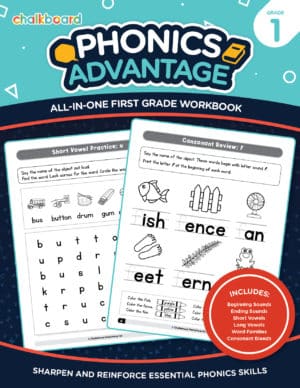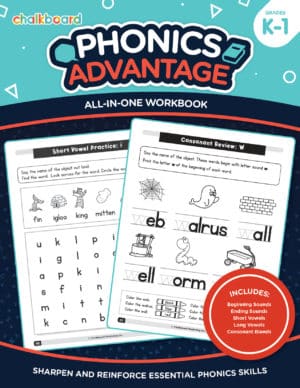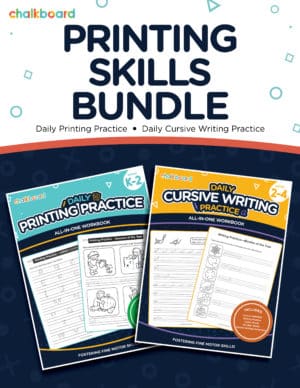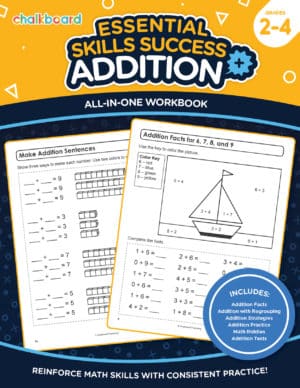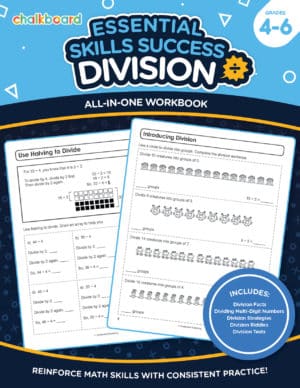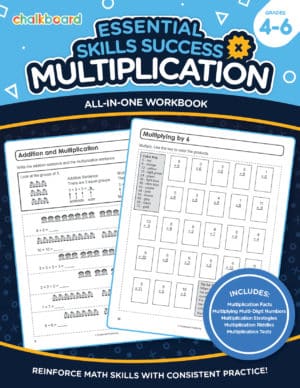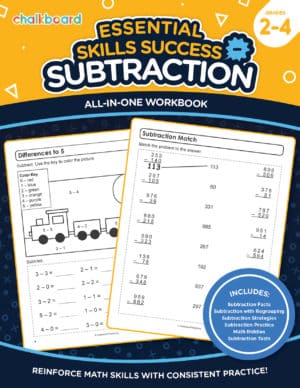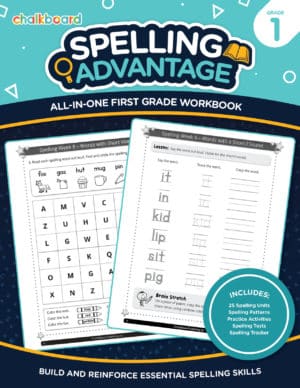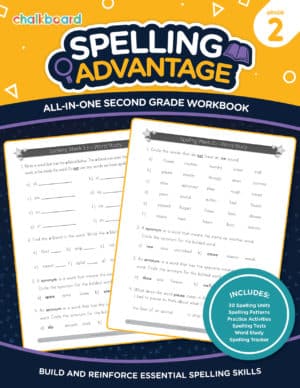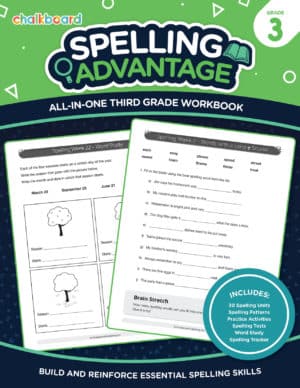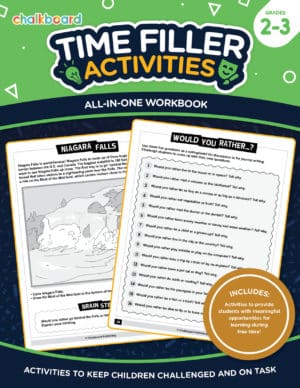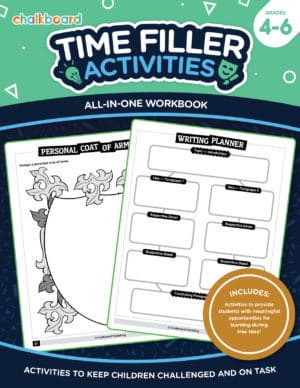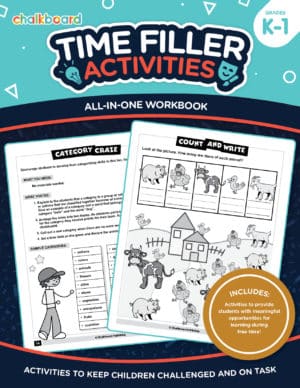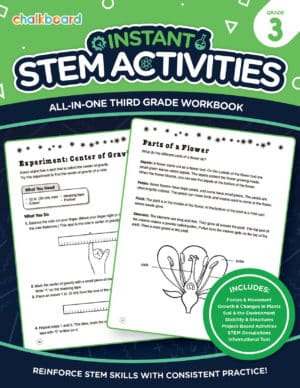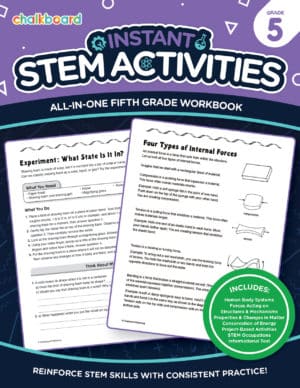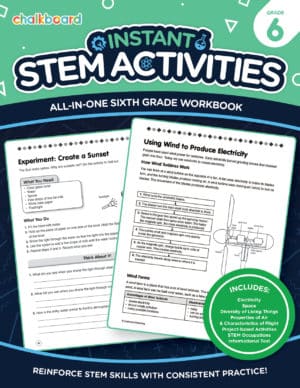Chalkboard has everything you need to help your kids learn and improve their Math, Science, Reading and Writing Skills!
Chalkboard has organized all of their workbooks, exercises and assignments into the most popular categories and grade levels, making it easy for you to find exactly what you need.
-
Common Core 10 Minute Daily Math Grade 1 – eBook
$15.99 Sold By: Chalkboard Publishing -
Common Core 10 Minute Daily Math Grade 2 – eBook
$15.99 Sold By: Chalkboard Publishing -
Common Core 10 Minute Daily Math Grade 3 – eBook
$15.99 Sold By: Chalkboard Publishing -
Common Core 10 Minute Daily Math Grade 4 – eBook
$15.99 Sold By: Chalkboard Publishing -
Common Core 10 Minute Daily Math Grade 5 – eBook
$15.99 Sold By: Chalkboard Publishing -
Common Core 10 Minute Daily Math Grade 6 – eBook
$15.99 Sold By: Chalkboard Publishing -
Common Core 100th Day Activities Grades K-3 – eBook
$14.99 Sold By: Chalkboard Publishing -
Common Core Active Play Activities Grades 4-6 – eBook
$15.99 Sold By: Chalkboard Publishing -
Common Core Active Play Activities Grades K-3 – eBook
$15.99 Sold By: Chalkboard Publishing -
Sale!
Common Core Addition & Subtraction Skills Bundle
$23.38 Sold By: Chalkboard Publishing -
Common Core Character Education Activities Grades 2-3 – eBook
$14.99 Sold By: Chalkboard Publishing -
Common Core Character Education Activities Grades 4-6 – eBook
$14.99 Sold By: Chalkboard Publishing -
Common Core Character Education Activities Grades K-1 – eBook
$14.99 Sold By: Chalkboard Publishing -
Common Core Daily Cursive Writing Practice Grades 2-4 – eBook
$15.99 Sold By: Chalkboard Publishing -
Common Core Daily Language Skills Grade 1 – eBook
$16.99 Sold By: Chalkboard Publishing -
Common Core Daily Language Skills Grade 2 – eBook
$16.99 Sold By: Chalkboard Publishing -
Common Core Daily Language Skills Grade 3 – eBook
$16.99 Sold By: Chalkboard Publishing -
Common Core Daily Language Skills Grade 4 – eBook
$16.99 Sold By: Chalkboard Publishing -
Common Core Daily Language Skills Grade 5 – eBook
$16.99 Sold By: Chalkboard Publishing -
Common Core Daily Language Skills Grade 6 – eBook
$16.99 Sold By: Chalkboard Publishing -
Common Core Daily Printing Practice Grades K-2 – eBook
$15.99 Sold By: Chalkboard Publishing -
Common Core Daily Reading Comprehension Grade 1 – eBook
$15.99 Sold By: Chalkboard Publishing -
Common Core Daily Reading Comprehension Grade 2 – eBook
$15.99 Sold By: Chalkboard Publishing -
Common Core Daily Reading Comprehension Grade 3 – eBook
$15.99 Sold By: Chalkboard Publishing -
Common Core Daily Reading Comprehension Grade 4 – eBook
$15.99 Sold By: Chalkboard Publishing -
Common Core Daily Reading Comprehension Grade 5 – eBook
$15.99 Sold By: Chalkboard Publishing -
Common Core Daily Reading Comprehension Grade 6 – eBook
$15.99 Sold By: Chalkboard Publishing -
Common Core Draw and Write Grades K-2 – eBook
$16.99 Sold By: Chalkboard Publishing -
Sale!
Common Core Grade 1 – Essentials Bundle
$58.46 Sold By: Chalkboard Publishing -
Sale!
Common Core Grade 1 – Math Skills Bundle
$52.16 Sold By: Chalkboard Publishing -
Sale!
Common Core Grade 1 – Reading Skills Bundle
$44.07 Sold By: Chalkboard Publishing -
Sale!
Common Core Grade 2 – Essentials Bundle
$58.46 Sold By: Chalkboard Publishing -
Sale!
Common Core Grade 2 – Math Skills Bundle
$52.16 Sold By: Chalkboard Publishing -
Sale!
Common Core Grade 3 – Essentials Bundle
$58.46 Sold By: Chalkboard Publishing -
Sale!
Common Core Grade 3 – Language Skills Bundle
$44.07 Sold By: Chalkboard Publishing -
Sale!
Common Core Grade 3 – Math Skills Bundle
$52.16 Sold By: Chalkboard Publishing -
Sale!
Common Core Grade 4 – Essentials Bundle
$58.46 Sold By: Chalkboard Publishing -
Sale!
Common Core Grade 4 – Language Skills Bundle
$44.07 Sold By: Chalkboard Publishing -
Sale!
Common Core Grade 5 – Essentials Bundle
$58.46 Sold By: Chalkboard Publishing -
Sale!
Common Core Grade 5 – Language Skills Bundle
$44.07 Sold By: Chalkboard Publishing -
Sale!
Common Core Grade 6 – Essentials Bundle
$58.46 Sold By: Chalkboard Publishing -
Sale!
Common Core Grade 6 – Language Skills Bundle
$44.07 Sold By: Chalkboard Publishing -
Common Core Grammar Practice Grade 3 – eBook
$15.99 Sold By: Chalkboard Publishing -
Common Core Grammar Practice Grade 4 – eBook
$15.99 Sold By: Chalkboard Publishing -
Common Core Grammar Practice Grade 5 – eBook
$15.99 Sold By: Chalkboard Publishing -
Common Core Grammar Practice Grade 6 – eBook
$15.99 Sold By: Chalkboard Publishing -
Common Core Health Activities Grades 1-3 – eBook
$14.99 Sold By: Chalkboard Publishing -
Common Core Health Activities Grades 4-6 – eBook
$14.99 Sold By: Chalkboard Publishing -
Common Core Instant Art Activities Grades 2–3 – eBook
$14.99 Sold By: Chalkboard Publishing -
Common Core Instant Art Activities Grades 4–6 – eBook
$14.99 Sold By: Chalkboard Publishing -
Common Core Instant Art Activities Grades K–1 – eBook
$14.99 Sold By: Chalkboard Publishing -
Common Core Learning Advantage Kindergarten – eBook
$15.99 Sold By: Chalkboard Publishing -
Common Core Learning Advantage Pre-Kindergarten – eBook
$15.99 Sold By: Chalkboard Publishing -
Common Core Math Basics Grade 1 – eBook
$15.99 Sold By: Chalkboard Publishing -
Common Core Math Basics Grade 2 – eBook
$15.99 Sold By: Chalkboard Publishing -
Common Core Math Basics Grade 3 – eBook
$15.99 Sold By: Chalkboard Publishing -
Common Core Media Literacy Activities Grades 4-6 – eBook
$19.99 Sold By: Chalkboard Publishing -
Common Core Media Literacy Activities Grades K-3 – eBook
$19.99 Sold By: Chalkboard Publishing -
Sale!
Common Core Multiplication & Division Skills Bundle
$23.38 Sold By: Chalkboard Publishing -
Common Core Phonics Advantage Grade 1 – eBook
$15.99 Sold By: Chalkboard Publishing -
Common Core Phonics Advantage Grades K-1 – eBook
$15.99 Sold By: Chalkboard Publishing -
Sale!
Common Core Printing Skills Bundle
$28.78 Sold By: Chalkboard Publishing -
Common Core Skills Success Addition – eBook
$12.99 Sold By: Chalkboard Publishing -
Common Core Skills Success Division – eBook
$12.99 Sold By: Chalkboard Publishing -
Common Core Skills Success Multiplication – eBook
$12.99 Sold By: Chalkboard Publishing -
Common Core Skills Success Subtraction – eBook
$12.99 Sold By: Chalkboard Publishing -
Common Core Spelling Advantage Grade 1 – eBook
$15.99 Sold By: Chalkboard Publishing -
Common Core Spelling Advantage Grade 2 – eBook
$15.99 Sold By: Chalkboard Publishing -
Common Core Spelling Advantage Grade 3 – eBook
$15.99 Sold By: Chalkboard Publishing -
Common Core Time Filler Activities Grades 2-3 – eBook
$14.99 Sold By: Chalkboard Publishing -
Common Core Time Filler Activities Grades 4-6 – eBook
$14.99 Sold By: Chalkboard Publishing -
Common Core Time Filler Activities Grades K-1 – eBook
$14.99 Sold By: Chalkboard Publishing -
Instant STEM Activities Grade 1 – eBook
$15.99 Sold By: Chalkboard Publishing -
Instant STEM Activities Grade 2 – eBook
$15.99 Sold By: Chalkboard Publishing -
Instant STEM Activities Grade 3 – eBook
$15.99 Sold By: Chalkboard Publishing -
Instant STEM Activities Grade 4 – eBook
$15.99 Sold By: Chalkboard Publishing -
Instant STEM Activities Grade 5 – eBook
$15.99 Sold By: Chalkboard Publishing -
Instant STEM Activities Grade 6 – eBook
$15.99 Sold By: Chalkboard Publishing -
USA Creative Coloring: Animals – eBook
$4.99 Sold By: Chalkboard Publishing -
USA Creative Coloring: Dinosaurs – eBook
$4.99 Sold By: Chalkboard Publishing

